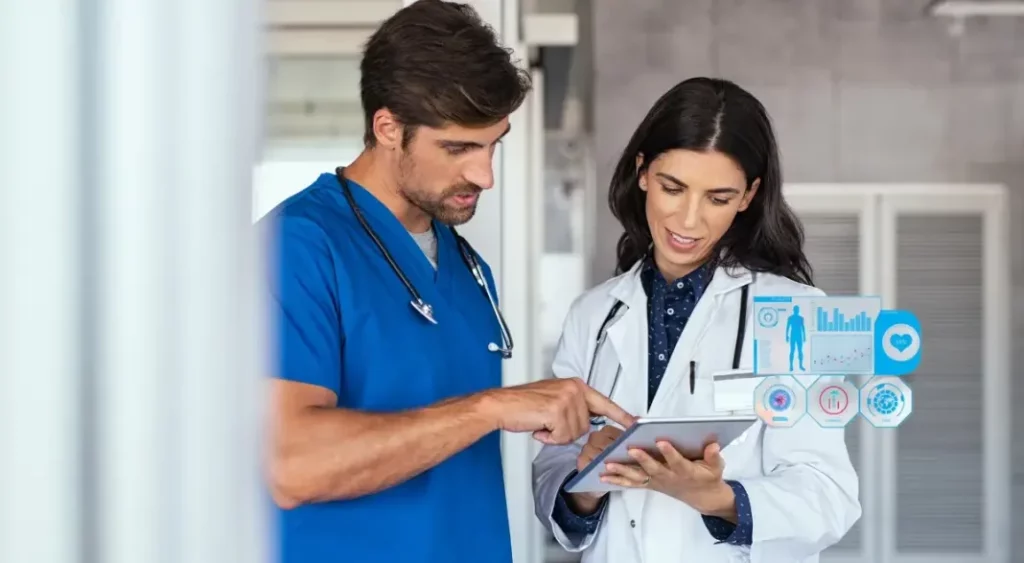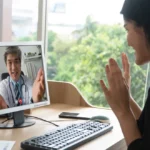How Patient-Generated Health Data (PGHD) help in RPM

Remote patient monitoring systems (RPM): caregivers have access to vitals, symptoms, and even daily routines of the patients in real time, and PGHD in changing the information to actionable insights is allowing the transformation of the care. Real-time data from PGHD enables healthcare providers to act more quickly, provide more individualized care, and produce better results.
Wondering how you can improve patient health outcomes? Patient Generated Health Data (PGHD) can help drive precision along with improving health outcomes in reference to Remote Patient Monitoring (RPM). It describes health data generated, documented, or collected by or from patients outside of traditional clinical settings.
Patient generated health data can help with timely interventions and consistent monitoring, which can improve clinical protocols and population health analytics, promote a collaborative approach to healthcare, streamline healthcare delivery by reducing the need for frequent in-person visits, and significantly improve health outcomes in the long run.
This data contains a variety of information, including:
- Vital indicators, such as temperature, weight, heart rate, and blood pressure.
- Health-related behaviors, including food, sleep habits, and physical activity.
- Patient experiences and symptoms, such as mood, pain thresholds, and medicine side effects.
- Lifestyle information, including environmental influences, daily schedules, and stress levels.
Table of Contents
ToggleHow PGHD Can Help Improve Health Outcomes?
- Reduces Clinical Visits & Hospital Readmissions: When patients have access to information regarding their health vitals and are able to communicate with their healthcare professionals remotely, they are less likely to end up making clinical or outpatient visits. RPM is not just a useful monitoring technique for reducing readmissions but also enables healthcare providers to support, educate, and monitor their patients with the goal of improving the quality of healthcare.
As per the healthcare trends, it delivered better outcomes for roughly six out of ten chronically ill patients. When patients exchange their health data with providers, healthcare costs associated with needless clinical visits and hospital stays get reduced, along with a reduction in patient emergencies.
- Prevents Acute Exacerbations of Chronic Illnesses: Patient generated health data reported via cellular enabled medical devices and healthcare apps is analyzed by the health providers who then make timely interventions. Wearables and monitoring devices, such as smartwatches collect health information and send it in real time. This allows providers to access your data right away and prevent acute exacerbations.
Patients who previously faced barriers to healthcare because of cost or distance can now transmit health information to clinicians more easily, quickly, and affordably, all because of RPM devices and platforms.
- Encourages Personalized Treatment Plans: Patient generated health data is increasingly being used in the treatment of chronic illnesses. Both patients and providers collaborate on this data for creating individualized care plans and in conjunction with RPM, it allows for addressing individual health needs and coordinating long-term care planning.
- Provides Details About Patient’s Health Status: PGHD may improve healthcare quality by increasing the efficiency, quantity, and accuracy of health data transmitted between patients and providers. Next-gen monitoring software like RPM helps deliver a holistic overview of patients’ health conditions by utilizing artificial intelligence, predictive analysis, and machine learning technology.
How Is Patient Generated Health Data Reshaping Healthcare?
In contrast to conventional medical data gathered during clinical visits, PGHD is reported in real time and offers a more thorough and detailed view of a patient’s health. It is proudly reshaping the modern healthcare system by:
- Supplying daily health data for continuous patient monitoring.
- Facilitating the early identification of possible health problems.
- Improving chronic disease management to lower hospital readmissions.
- Boosting self-management and patient involvement
- Enhancing performance to support value-based care efforts.
Track Your Patients’ Health With HealthArc’s RPM Platform
The right remote patient monitoring platform is the one that provides continuous and real-time access to patient generated health data. This can help improve various aspects of health by cutting unnecessary clinical costs and supporting patients and providers in managing chronic diseases, all while contributing to enhanced patient safety and satisfaction.
Choosing a HIPAA compliant RPM partner like HealthArc can not only helps with PGHD but also helps improve patient outcomes and data precision at the same time. Our platform offers features that help boost patient health, engagement rate, and satisfaction ratings, allowing healthcare practices to implement care programs more quickly and conveniently.
Frequently Asked Questions (FAQs)
PGHD, or Patient-Generated Health Data, is the patient’s health information, alongside their vitals, symptoms, diet, or activity, to include any data relevant to health. PGHD is captured outside the clinical settings and is uploaded through RPM instruments.
PGHD assists in remote patient care by offering up-to-date information on the patient’s health. This information equips the care team to resolve problems proactively, accelerate necessary changes in treatment, and greatly minimize redundant hospital visits.
Blood pressure monitors, glucose meters, pulse oximeters, smart scales, and other wearables are FDA-approved and collect PGHD, which is securely shared through RPM platforms.
PGHD collected from FDA-approved devices and shared through RPM platform is used for making clinical decisions, especially when there is professional clinical guidance available.
RPM billing codes 99453, 99454 and 99457, 99458 are concerned with the patients’ health data, their devices and time spent for reviewing and consulting.
HealthArc offers real-time monitoring and alerts for emerging issues, visual dashboards, and coordinated nurse and physician team management using PGHD within RPM—providing proactive outcome-based care.
Want to take your healthcare delivery experience to the next level? Schedule a demo today and learn more about our remote patient monitoring software and patient generated health data.
Most Recent Blogs
Categories
Related Blog
- November 26, 2025 | Read Time: 14 mins
Return on Investment (ROI) of Remote Patient Monitoring (RPM): A Complete Guide for ACOs and Healthcare Organizations
The U.S. healthcare system continues its transition from fee-for-service models to value-based...
Learn More- November 24, 2025 | Read Time: 15 mins
Common RPM Pricing Models for Providers: A Profitability-Focused Guide
Remote Patient Monitoring (RPM) has rapidly emerged as one of the leading...
Learn More- October 23, 2025 | Read Time: 12 mins
How RPM Devices Improve Hypertension and Diabetes Outcomes in Medicare Populations
Remote patient monitoring (RPM) is transforming chronic care for Medicare beneficiaries. CMS...
Learn More


